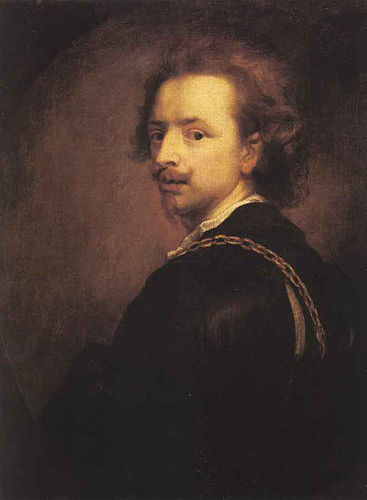(Antwerp 1599 - London 1641)
Anthony Van Dyck was the son of a merchant from Antwerp. Van Dyck’s career was brief but it also was stunning. The nobility and the royalty were on his side. He founded the School of English portrait artists and the colour van Dyck brown was named after him.
He began being the apprentice of Van Balen (1609 - 1612) and he soon showed himself to be a precocious artist, as we can see in his work Elderly Man, which is dated from 1613. Later, he worked with Jordaens and Rubens. In 1618 he passed the master examination and two years later, he was introduced in the English Court by the collector Howard, who also introduced him to the Venetian painting.
He lived in Italy between 1622 and 1627. In Rome, he was the guest of the Cardinal Bentivoglio and later, he settled in Genoa, where he asserted himself by means of his artistic quality and elegance. He also worked in Sicily. During his Italian period he mainly painted portraits. During 1627 - 1632 Van Dyck developed his activity in Antwerp (portraits and altarpieces). In 1630 he stayed in Paris, where illustrious men pictures drew by him were engraved (his Iconography).
King Charles I called him to London in 1632, he ennobled Van Dyck and filled him with honours and money. In those days, Van Dyck at the same time painted the most notable people in the British aristocracy and led a luxurious life at Blackfriars and at his country house in Eltham. He varied between the influence of Caravaggio and Jordaens as we can see in his series of Apostles’ heads.
As Rubens did, Van Dyck painted literary and mythological subjects, to which he gave a charm that was both sensuous and tender: Nymphs in the Bath, Diana and Endymion and Rinaldo and Armida.
Van Dyck was a great painter of religious subjects and his big canvases for the Flanders and Brabant churches show an original version of the Baroque, sober and soft. His mysticism is impregnated with refined hues and languid sorrow. These features are very typical from his favourite scenes as we can see in his works La Sacra Famiglia, The Pietà; and Ecstasy of Saint Francis. His real artistic glory was based on his works as a portrait artist.


